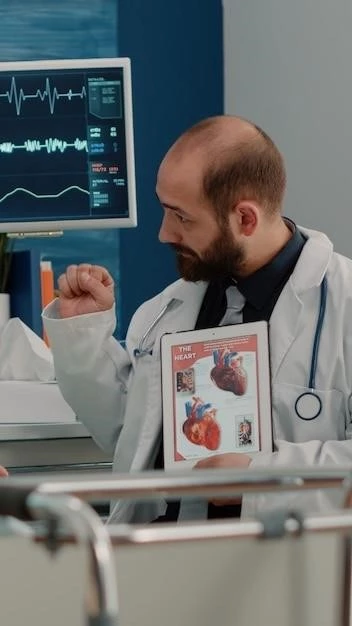Introduction
Primary pulmonary hypertension is a rare and fatal disease characterized by high blood pressure in the lungs. The condition, also known as idiopathic pulmonary arterial hypertension, involves the narrowing of blood vessels in the lungs, leading to elevated pressure levels in the pulmonary artery. This medical condition can significantly impact the quality of life and prognosis of affected individuals.
Definition of Primary Pulmonary Hypertension
Primary pulmonary hypertension involves persistently high blood pressure in the pulmonary arteries, exceeding 25 mmHg at rest and 30 mmHg during exercise. This rare condition affects the arteries in the lungs, leading to potential complications and reduced quality of life for affected individuals.
Causes of Primary Pulmonary Hypertension
Primary pulmonary hypertension can be caused by various factors, including idiopathic and heritable conditions, as well as certain medications and illegal drugs. Understanding these underlying causes is crucial for proper diagnosis and management of the disease.
Idiopathic Pulmonary Arterial Hypertension
Idiopathic pulmonary arterial hypertension is a rare and potentially fatal condition characterized by high blood pressure in the pulmonary arteries without a known underlying cause. This form of the disease poses significant challenges in diagnosis and treatment.
Heritable Pulmonary Arterial Hypertension
Heritable pulmonary arterial hypertension is a form of the disease caused by genetic factors passed down through families. This subtype of primary pulmonary hypertension can significantly impact disease progression and treatment outcomes.
Medications and Illegal Drugs
Primary pulmonary hypertension can be triggered by the use of certain medications or illegal drugs, such as methamphetamine. Understanding the role of these substances is crucial in managing and preventing the development of this serious condition.

Symptoms of Primary Pulmonary Hypertension
Common symptoms of primary pulmonary hypertension include shortness of breath, lightheadedness, and palpitations. These indicators can significantly impact the daily lives of individuals affected by the condition.
Shortness of Breath
One of the primary symptoms of primary pulmonary hypertension is shortness of breath, especially during physical activity. This can significantly impact the quality of life and daily activities of individuals with the condition.
Lightheadedness
Individuals with primary pulmonary hypertension may experience lightheadedness, especially during physical exertion. This symptom can potentially impact daily activities and quality of life of affected individuals.
Palpitations
Palpitations, or a fast heart rate, can be a symptom of primary pulmonary hypertension. These abnormal heart rhythms may occur during physical activity and can worsen over time, affecting the overall well-being of individuals with the condition.
Diagnosis of Primary Pulmonary Hypertension
Diagnosing primary pulmonary hypertension involves clinical examination, cardiac catheterization, and imaging studies. Detecting this condition early and accurately is essential for effective management and treatment.
Clinical Examination
Diagnosing primary pulmonary hypertension often involves a thorough clinical examination to assess symptoms, medical history, and physical signs indicative of the condition. This initial evaluation is essential for guiding further diagnostic steps and treatment decisions.
Cardiac Catheterization
In the diagnosis of primary pulmonary hypertension, cardiac catheterization plays a crucial role. This procedure involves inserting a thin tube into the heart to measure blood pressure and assess the severity of the condition accurately.
Imaging Studies
Imaging studies play a critical role in diagnosing primary pulmonary hypertension. Techniques such as echocardiography and CT scans help visualize the heart and lungs, providing valuable information for accurate diagnosis and treatment planning.
Treatment Options for Primary Pulmonary Hypertension
Various treatment options for primary pulmonary hypertension include medications, oxygen therapy, and lung transplantation. These interventions aim to manage symptoms and improve the quality of life for individuals with the condition.
Medications
Treatment of primary pulmonary hypertension often includes the use of medications to manage symptoms and improve quality of life. These drugs can help dilate blood vessels, reduce blood pressure, and address underlying causes of the condition.
Oxygen Therapy
Oxygen therapy is a common treatment option for individuals with primary pulmonary hypertension. Supplemental oxygen can help improve blood oxygen levels, reduce shortness of breath, and enhance overall well-being in affected patients.
Lung Transplantation
In cases where primary pulmonary hypertension is severe and resistant to other treatments, lung transplantation may be considered as a therapeutic option. This procedure can improve quality of life and increase survival rates in eligible patients.
Complications Associated with Primary Pulmonary Hypertension
Complications of primary pulmonary hypertension may include heart failure, blood clots, and arrhythmias. Managing these complications is essential for ensuring better outcomes for individuals with the condition.
Heart Failure
Primary pulmonary hypertension can lead to heart failure, a serious complication where the heart is unable to pump enough blood to meet the body’s needs. Managing this condition is crucial in improving outcomes for affected individuals;
Blood Clots
Individuals with primary pulmonary hypertension may face the risk of blood clots, which can lead to serious complications. Understanding and managing this potential issue is crucial in the overall care of affected individuals.
Arrhythmias
Individuals with primary pulmonary hypertension may experience arrhythmias, abnormal heart rhythms that can lead to complications. Managing these heart rhythm disturbances is essential in the overall care of patients with this condition.

Prognosis and Life Expectancy
Factors affecting the prognosis of individuals with primary pulmonary hypertension vary. Survival rates depend on various factors unique to each patient, influencing life expectancy and overall outcomes.
Factors Affecting Prognosis
The prognosis of primary pulmonary hypertension can be influenced by various factors, including the severity of the condition, response to treatment, presence of complications like heart failure, and individual patient characteristics. Understanding these factors is essential for predicting outcomes and designing personalized care plans.
Primary pulmonary hypertension prognosis varies, influenced by factors such as disease severity, treatment response, and complications like heart failure; Understanding individual prognosis aids in personalized care and management decisions.
Research and Advancements in Primary Pulmonary Hypertension
New treatment approaches and ongoing clinical trials show promise in improving outcomes for individuals with primary pulmonary hypertension. These advancements aim to enhance treatment efficacy and quality of life for patients.
Survival Rates
The survival rates of individuals with primary pulmonary hypertension can vary based on factors such as disease progression, treatment effectiveness, and the presence of complications. Understanding these rates helps in predicting outcomes and providing appropriate care for affected individuals.
Clinical Trials
Current clinical trials are investigating new treatment approaches for primary pulmonary hypertension to enhance therapeutic options and improve patient outcomes. Participation in these trials plays a vital role in advancing medical knowledge and optimizing care for individuals with the condition.
Lifestyle Management for Individuals with Primary Pulmonary Hypertension
Exercise guidelines, dietary recommendations, and mental health support are essential for individuals with primary pulmonary hypertension. These lifestyle interventions aim to improve overall well-being and quality of life for patients.
Exercise Guidelines
Individuals with primary pulmonary hypertension should follow specific exercise guidelines to help manage symptoms and improve their overall well-being. It is essential to balance physical activity with rest to maintain a healthy lifestyle.
Dietary Recommendations
Individuals with primary pulmonary hypertension should follow specific dietary recommendations to support heart health and overall well-being. A balanced diet rich in nutrients and low in sodium can help manage symptoms and improve quality of life for these individuals.
Mental Health Support
Mental health support is essential for individuals with primary pulmonary hypertension to cope with the emotional and psychological impact of the condition. Counseling, therapy, and support groups can help enhance overall well-being and quality of life.
Awareness and Education Initiatives for Primary Pulmonary Hypertension
Public health campaigns and patient support groups play a crucial role in raising awareness about primary pulmonary hypertension. These initiatives provide educational resources and emotional support for individuals affected by the condition.
Public Health Campaigns
Public health campaigns play a vital role in raising awareness about primary pulmonary hypertension, highlighting the importance of early detection, treatment options, and lifestyle management. These initiatives aim to educate the public and healthcare professionals about the condition.
Patient Support Groups
Joining patient support groups can provide individuals with primary pulmonary hypertension emotional and social support, educational resources, and a sense of community. These groups offer a platform for sharing experiences and coping strategies.
Conclusion
In conclusion, primary pulmonary hypertension is a complex and potentially life-threatening condition that requires comprehensive management approaches. With advancements in treatment strategies, increased awareness, and support initiatives, individuals affected by this disease can receive improved care and quality of life.
